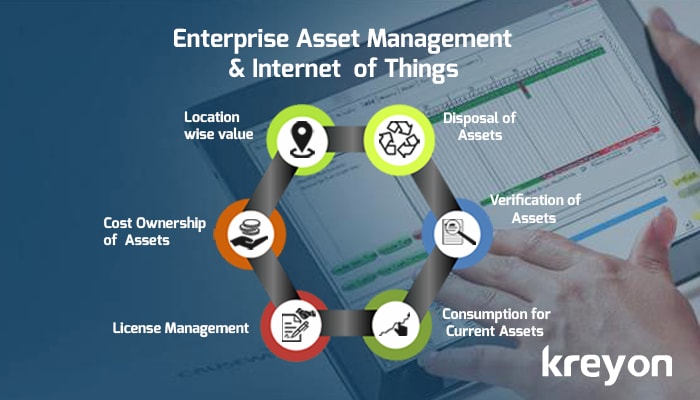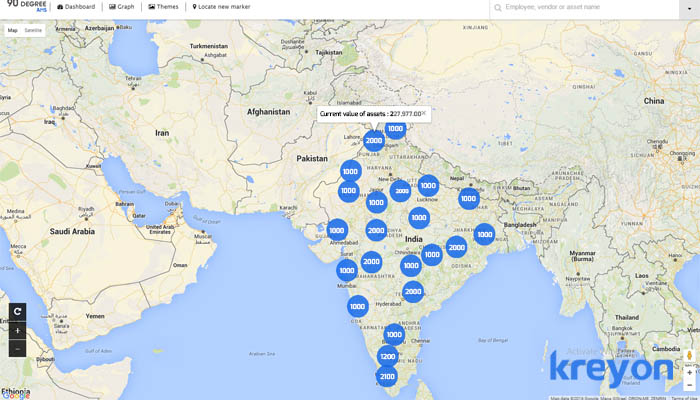How Enterprise Asset Management is changing with Internet of Things

The computing world is changing with IoT faster than most people realise. The new wave of computing is smart sensors, equipments & devices that can talk to each other without manual interactions. These devices are intelligent enough to take proactive actions & enable human beings with capabilities never seen before. Internet of Things (IoT) sensors and devices are expected to exceed mobile phones as the largest category of connected devices in 2018, growing at a 23% compound annual growth rate (CAGR) from 2015 to 2021 as per 2016 Ericcson Mobility Report. This wave of computing is now one of the top contested spaces that companies don’t want to miss. Internet of things is changing enterprise asset management and how people work with machines.
Are you an enterprise that is wondering how IoT can enable and empower you? The Enterprise Asset Management may be a great opportunity for your organisation to unleash incredible value from this emerging trend. A look at how enterprise asset management can leverage Internet of things for unleashing true value from assets, improve their value & ensure optimum ROI:
1. Value wise break-up of Assets according to locations:
With RFID tagging the assets of an organisation can be tracked with realtime device signals sent to a centralised system. This helps an organisation to map assets with respect to geographic locations. The current value of assets in particular geographic locations can be highlighted with Maps. The data from these assets is collected with RFID tags to get the realtime locations. The current values of assets are calculated after depreciations & other applicable deductions like impairment etc. The asset break-up represents the complete picture of different locations.

2. Retirement & Disposal of Assets:
Disposable assets are those assets that need to be discarded from the active inventory. These assets could be past their economic useful life, impaired or damaged etc. Often times, it becomes hard to know which assets need to be replaced when. But with IoT based sensors, these devices automatically send signals to the system when they no longer serve useful purpose. The maintenance cost of assets which are not discarded on time is very high. The RFID mapping of assets with key event alerts for economic useful life can help an organisation to effectively replace them.
3. Verification of assets:
The data capturing process of verification of assets is extremely tedious & requires tremendous efforts. With RFID readers, thousands of assets can be verified in a minutes. The data is also sent to the centralised system for analysis. Tracking the assets has never been easier. The IoT enables all employees to take ownership for their assets. The assets can be verified with a mobile app. This app can be used to verify the asset and also track the condition of the asset.
4. Cost of Ownership for assets:
Organisations spend a huge amount of money not only for procurement of assets, but also for maintenance, deployment, verifications, downtime & discarding them. IoT enables realtime supply chain management for optimised procurement. It makes informed decisions with realtime inventory knowledge. The assets are also equipped with sensors for proactive health monitoring, which reduces downtime. Overall, the improvement in efficiency for lifecycle management of assets reduces the Cost of Ownership for companies.
5. Contracts & License Management:
An organisation with different types of fixed assets needs to track its contracts very efficiently. The maintenance & License contracts from vendors can be mapped with an IoT enabled Asset Management System. The vendors for each & every device can be tracked with the detailed contract terms. Any breakdown can be tracked and marked against these vendors. The vendors can also be notified proactively from the system for key events like due maintenance for large plants & machinery according to the contractual terms. These vendors can also be integrated for supply chain management. The vendor performance, delivery terms, contracts & licenses improve transparency for asset management.
6. Consumption Trends for Current Assets:
The consumption trends of current assets can be uncovered with IoT enabled enterprise asset management system. The fastest consuming items, idle stock, user requests, outstanding purchase orders can all be analysed with this. The most valuable consumable items, their usage, expenses etc can be automated. The total quantity of consumed assets, analysis of fast consuming assets, departments with highest requirements etc can be analysed. The consumption trends for current assets can help to reduce wastage and idle stock.
7. Operational Intelligence:
The data that is gathered from the devices enables the machine to machine communication. This m2m communication is used for learning, and optimises how operations are managed. The manufacturing processes, floor work, and operations can be optimised with IoT. The realtime alerts for key events from these devices across the factory can result in better operational efficiency and execution. These devices are often connected with active tags; Wifi equipments etc and communicate to a centralised system.
The internet of things can enable organisations to drive true value from their assets. The automatic collection of data from devices results in improved process efficiency, optimising the existing resources and correlating them with business events for best outcomes. The assets are now talking to each other and centralised systems to steer us in the world ruled by machines.
Kreyon Systems is an enterprise software company for asset management solutions. We have deep expertise in building and architecting software products & solutions for asset management. Our expertise in asset management is leveraged by public and government for fixed assets lifecycle management. Please get in touch with us for any queries or assistance.
